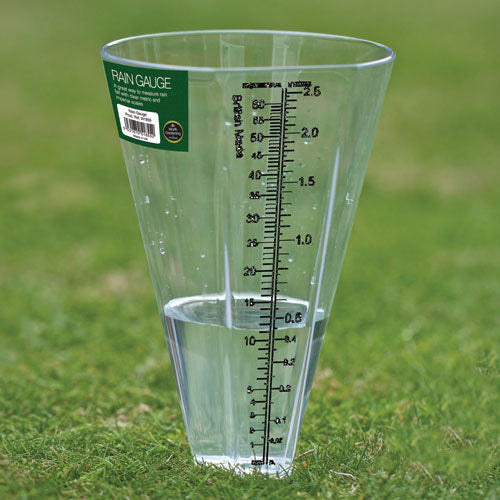How a Rain Gauge Can Enhance Your Recognizing of Local Climate Patterns
How a Rain Gauge Can Enhance Your Recognizing of Local Climate Patterns
Blog Article
Revealing the Scientific Research Behind Rainfall Assesses: How These Instruments Play an Essential Function in Environment Research Study and Ecological Surveillance
Rainfall evaluates, apparently simple gadgets, hold a profound significance in the world of climate research study and ecological monitoring. These plain tools silently gather one of nature's most necessary components-- rains. Behind their unpretentious facade lies an intricate science that is essential for recognizing the characteristics of our environment. As we peel back the layers of this clinical shroud surrounding rain gauges, we discover a globe where accuracy, information accuracy, and precise monitoring converge to unveil a deeper understanding of our transforming climate and its effect on the earth.
Significance of Rain Scales
Rain evaluates play a vital function in surveillance and determining precipitation degrees, offering important data for environment study and analysis. These tools are basic in measuring the amount of rains that happens in a certain location over a particular period. By accumulating and determining rain, rain assesses offer valuable understandings into the distribution and intensity of precipitation, assisting meteorologists, hydrologists, and climatologists in recognizing weather patterns and fads.
Among the essential reasons rainfall assesses are vital is their capability to supply localized and exact data. Unlike satellite or radar-based measurements, which supply broader observations, rainfall evaluates offer accurate details specific to the area where they are placed. This localized data is vital for numerous applications, including flood projecting, dry spell monitoring, and water source monitoring. In addition, long-lasting data accumulated from rainfall determines helps in analyzing climate modification impacts and patterns, contributing significantly to clinical research study and decision-making procedures. Fundamentally, rain assesses offer as important tools in the field of meteorology and environmental scientific research, playing an important role beforehand our understanding of weather condition and environment dynamics.
Sorts Of Rain Gauges

Capability and Procedure
In the world of climate study and atmospheric research studies, the effectiveness of rain evaluates lies in their detailed functionality and exact operational mechanisms. Rain gauges are designed to precisely determine the amount of rainfall that drops over a details area during a collection period.
The capability of rainfall gauges is based upon the principle of determining and collecting rain in a standard manner. This gathered information is essential for comprehending regional weather condition patterns, tracking lasting climate patterns, and examining reference ecological effects. To make certain exact dimensions, rain determines demand to be purposefully put in open Website areas away from obstructions such as structures or trees that can disrupt the collection procedure.
The functional element of rainfall evaluates entails normal upkeep to avoid debris build-up, calibration checks to keep dimension precision, and information taping for analysis (rain gauge). Generally, the functionality and operation of rain gauges are crucial for gathering reliable precipitation data essential to climate research study and environmental tracking
Function in Climate Study
Offered the vital significance of exact precipitation dimensions in recognizing weather condition patterns and ecological influences, the role of rain gauges in environment study is indispensable. Rain determines provide crucial data for environment research study by evaluating the quantity of rainfall that drops over a particular location throughout a provided period. This data is critical for monitoring long-term patterns in precipitation patterns, assessing the influence of climate adjustment on rains distribution, and enhancing environment models.

Climate scientists use data accumulated from rainfall gauges to evaluate variations in rainfall levels, recognize regional climate patterns, and review the efficiency of water source administration strategies. By contrasting historic precipitation information with present measurements, scientists can find changes in precipitation patterns, such as adjustments in the frequency or strength of rains events. This information is vital for understanding how environment modification is influencing rainfall characteristics and can help policymakers make notified decisions pertaining to adjustment and reduction approaches.
Applications in Environmental Tracking

In flood forecasting, rainfall gauge data assists to track rainfall strength and distribution, permitting authorities to release prompt cautions and take necessary steps to alleviate flood threats (rain gauge). Drought tracking depends on rain gauge information to analyze dampness levels in the dirt and track precipitation deficiencies, helping in the identification of drought-prone areas and the execution of dry spell feedback strategies
Moreover, rain gauge information plays a crucial role in water resource management by offering information on water availability and usage patterns. This information is made use of to make educated choices pertaining to water appropriation, preservation actions, and my response lasting water source planning. Additionally, in farming, rain scale data aids farmers in maximizing watering routines, plant choice, and overall ranch administration practices based on regional precipitation patterns. In general, rainfall assesses are important tools in ecological monitoring, providing beneficial insights that add to informed decision-making and sustainable resource management.
Conclusion
Finally, rainfall gauges are vital tools for measuring precipitation, offering beneficial information for climate research study and environmental tracking. With different types and performances, rain determines play a vital function in understanding rainfall patterns and their influence on the environment. By precisely gauging rains, these devices add to the innovation of scientific expertise and help in making notified decisions pertaining to water source monitoring and calamity preparedness.
Rainfall assesses play an important role in monitoring and gauging precipitation levels, offering crucial information for climate research study and evaluation. The typical rain gauge, recognized as the "tipping pail" scale, is one of the most typically used devices. Ultrasonic rain determines use sound waves to discover the existence of rainfall, providing real-time data on rainfall levels.Climate scientists utilize data gathered from rainfall evaluates to assess variants in rainfall degrees, determine regional environment trends, and evaluate the performance of water resource management approaches.In conclusion, rainfall gauges are crucial tools for measuring rainfall, offering important data for climate research study and environmental monitoring.
Report this page